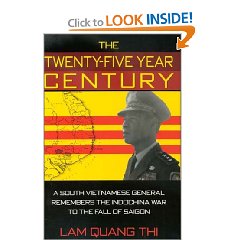
1. Anybody capable of writing The Great Turning (Volume 1 of 2) (EasyRead Large Edition): From Empire to Earth Community

1. Anybody capable of writing The Great Turning (Volume 1 of 2) (EasyRead Large Edition): From Empire to Earth Community

Sadly, the book, while full of extraordinary detail at a personal level, is extremely tedious. It *felt* like it took a century to read, and my eyes just glazed over with page after page of names of relatives, classmates, town, etcetera.
The author's first book, Autopsy: The Death of South Viet Nam is probably a much better book for anyone other than a student of the genealogical details.
The photos were disappointing, and while the strategic maps were helpful there was little to enliven the thirteen chapters.
Over-all I formed three impressions:

The author gifts us with a counter-culture manifesto that resurrects the goodness of capitalism while also connecting to the roots of humanity, of the human soul as a microcosm of the soul of society.
Be patient, the first third of this book will amuse, enlighten, & provoke, at which point it will grab you by the throat and shake your fundamental perceptions of life. The author is compelling in both a scientific sense, weaving psychology, biology, economics, and sociology together; and in an artistic sense, delivering theater of the mind, new visions, poetic turns of phrase page after page, and a massive amount of purpose-laden provocative minutia, all of which culminates in blinding flashes of insight that explain the mind-expanding role of circuses, the failure of religion, and the natural cycles of fission and fusion, splintering apart and coming together.
Continue reading “Review: The Genius of the Beast–A Radical Re-Vision of Capitalism”

1. China's government is a screwed up bureaucracy with petty egos just like ours.
2. China produced moderate pragmatist Premier Zhao Ziyang, promoted him, and empowered him.
With all due respect to all those wailing and moaning about the years of house arrest, this book is phenomenal for documenting the above two points alone, and Premier Zhao Ziyang will stand in history as one of the greatest leaders along with Mao Zedong (their rendition, I always preferred Mao Tse-tung) and Deng Xiaoping.
The premise is that JFK went against the national security establishment, notably the CIA, the Joint Chiefs of Staff, and the military-industrial complex, and was assassinated by deliberate plan of the CIA, with Richard Helms, David Atlee Philips, David Sanchez Morales, and Desmond Fitzgerald specifically culpable for high crimes of treason.
As with 9/11 and the documented culpability of Dick Cheney, Donald Rumsfeld, Larry Silverstein, and Rudy Gulliani, there is insufficient proof in this book for conviction, but it is more than ample to demand a very intrusive and comprehensive investigation of the CIA, the Secret Service, and the FBI. I *want* to believe Helms when he says CIA did nothing not ordered by a President. However, if the premise of this book is proven, CIA should be abolished, its HQS demolished, and salt plowed into the earth at Langley.
The book's most positive account is of the back-channel dialog JFK developed with Khrushchev, Castro, and the Pope, dialog that not only defused the confrontations of the time, but also ended the Cold War. The theology of peace, the role of Monk Thomas Merton, the role of Norman Cousins (author of The Pathology of Power – A Challenge to Human Freedom and Safety), the role of the Pope and Pacem in Terris, and the strength JFK drew from a single meeting with Quakers are moving. This is in many ways a resurrection of JFK and both an epitaph worthy of his unsung accomplishments, and a call to arms for achieving closure–truth and reconciliation–with respect to his assassination by US Government personnel committing treason.
Continue reading “Review: JFK and the Unspeakable–Why He Died & Why It Matters”

The below story may well be annecdotal, but there is a certain elegance to it that bears reflection. The final personal attack on Washington bureaucrats has been removed–the full story can be seen by clicking on the photograph, one we use to depict the distance between those of us paying taxes, and those consuming our hard-earned revenue.
|
|
SIDE NOTE: The M1A1 tank was designed without regard to the width of railroad tunnels. This has led to its incapacitation in Italy and other countries where railway guage and tunnel size are smaller than “assumed.”
HISTORY MATTERS.
AN INTERESTING HISTORY LESSON: Railroad tracks…
The US standard railroad gauge (distance between the rails) is 4 feet, 8.5 inches. That's an exceedingly odd number.
Why was that gauge used? Because that's the way they built them in England, and English expatriates built the US railroads.
Why did the English build them like that? Because the first rail lines were built by the same people who built the pre-railroad tramways, and that's the gauge they used.
Why did ‘they' use that gauge then? Because the people who built the tramways used the same jigs and tools that they used for building wagons, which used that wheel spacing.
Why did the wagons have that particular odd wheel spacing? Well, if they tried to u se any other spacing, the wagon wheels would break on some of the old, long distance roads in England , because that's the spacing of the wheel ruts.
So who built those old rutted roads? Imperial Rome built the first long distance roads in Europe (and England ) for their legions. The roads have been used ever since.
And the ruts in the roads? Roman war chariots formed the initial ruts, which everyone else had to match for fear of destroying their wagon wheels. Since the chariots were made for Imperial Rome , they were all alike in the matter of wheel spacing. Therefore, the United States standard railroad gauge of 4 feet, 8.5 inches is derived from the original specifications for an Imperial Roman war chariot. Bureaucracies live forever.
So the next time you are handed a Specification/ Procedure/Process and wonder ‘What horse's ass came up with it?' you may be exactly right. Imperial Roman army chariots were made just wide enough to accommodate the rear ends of two war horses. (Two horses' asses.) Now, the twist to the story:
When you see a Space Shuttle sitting on its launch pad, there are two big booster rockets attached to the sides of the main fuel tank. These are solid rocket bo osters, or SRBs. The SRBs are made by Thiokol at their factory in Utah . The engineers who designed the SRBs would have preferred to make them a bit fatter, but the SRBs had to be shipped by train from the factory to the launch site. The railroad line from the factory happens to run through a tunnel in the mountains, and the SRBs had to fit through that tunnel. The tunnel is slightly wider than the railroad track, and the railroad track, as you now know, is about as wide as two horses' behinds.
So, a major Space Shuttle design feature of what is arguably the world's most advanced transportation system was determined over two thousand years ago by the width of a horse's ass.

ESRI Sales Material, Excellent Price, Recommended,
The book loses one star for refusing to address Google Earth and elements of the Google offering in this industry space. While Google is predatory and now under investigation by the anti-trust division of the Department of Justice, to ignore Google and its implications for cloud management of data in geospatial, time, and other cross- cutting contests, is the equivalent of poking one eye out to avoid seeing an approaching threat.
Having said that, I found this book from ESRI charming, useful, and I recommend it very highly, not least because it is properly priced and very well presented. Potential clients of ESRI can no doubt get bulk deliver of this volume for free.
Return on Investment factors that ESRI highlights up front include:
+ Cost and times savings
+ Increased efficiency, accuracy, productivity of existing resources
+ Revenue generation
+ Enhanced communications and collaboration
+ Automated workflows
+ More efficient allocation of new resources
+ Improved access to information.
The book consists of very easy-to-read and very well-illustrated small case studies, most previously published in Government Matters, which appears to be a journal (there are a number listed by that title).
Here are the highlights of this book for me personally:
+ Allows for PUBLIC visualization of complex data
+ Framework for “seeing” historical data and trends
+ Value of map-based dialog [rather than myth-based assertions]
+ Allows for the visualization of competing perspectives past and future
+ Illuminated land population dynamics, I especially like being able to see “per capita” calculations in visual form, especially when per capita can also be sliced by age, sex, income, religion, race, and so on.
+ Mapping derelict vessels underwater is not just a safety function, but opens the way for volunteer salvage and demolition
+ GROWS organically by attracting new data contributors who can “see” the added value of contributing their data and then being able to see their data and everyone else's data in geospatial terms. This is a POWERFUL incentive for information-sharing, which more often than not receives lip service. GIS for me is the “key” to realizing sharing across all boundaries while also protecting individual privacy
+ Shows “pockets” of need by leveraging data gaps in relation to known addresses (e.g. immunizations, beyond 5 minute fire response, etc.)'
+ Gives real meaning to “Intelligence Preparation of the Battlefield (IPB)” and–not in this book–offers enormous potential if combined with a RapidSMS web database that can received text messages from hundreds of thousands of individuals across a region
+ Eliminates the time-energy cost of data collection in hard copy and processing of the individual pages into an aggregate database.
The book discusses GIS utility in the routing of hazardous materials, but avoids the more explosive (pun intended) value of GIS in showing the public as well as government officials where all the HAZMAT is complacently stored now. For a solid sense of the awaiting catastrophe, see my review of The Next Catastrophe: Reducing Our Vulnerabilities to Natural, Industrial, and Terrorist Disasters.
The book also avoids any discussion of the urgency as well as the value of GIS in tracking and reducing natural resource consumption (e.g. water usage visible to all house by house), and the enormous importance of rapidly making it possible for any and all organizations to channel their data into shared GIS-based aggregations. For a sense of World Brain as EarthGame, see my chapter in Collective Intelligence: Creating a Prosperous World at Peace the chapter is also free online at the OSS.Net, Inc. website forward slash CIB.
This book, 189 pages of full color, is a righteous useful offering. I would encourage ESRI to become the GIS publisher of choice, buy out the titles that I could not afford, and enter the business of affordable aggregate publishing in the GIS field. Other titles by ESRI on GIS:
Measuring Up: The Business Case for GIS
The GIS Guide for Local Government Officials
Zeroing in: Geographic Information Systems at Work in the Community
Five other cool books on data pathologies that GIS can help resolve:
The Landscape of History: How Historians Map the Past
Fog Facts : Searching for Truth in the Land of Spin (Nation Books)
Lost History: Contras, Cocaine, the Press & ‘Project Truth'
Forbidden Knowledge: From Prometheus to Pornography
The Age of Missing Information (Plume)
The latter remind me that GIS will not blossom fully until it can help the humanities deal with emotions, feelings, and perceptions across tribal and cultural boundaries. Right now, 23 years after I first worked with GIS in the Office of Information Technology at CIA, GIS is ready for the intermediate leap forward: helping multinational multiagency data sets come together. ESRI has earned deep regard from me with this book and I will approach them about a new book aimed at the UN, NGOs, corporations, and governments that wish to harmonize data and in so doing, harmonize how they spend across any given region, e.g. Africa. This will be the “master leap” for GIS, enabling the one billion rich to respond to micro-needs from the five billion poor, while also increasing the impact of aggregated orchestrated giving by an order of magnitude.
ESRI: well done!
Click Here to Vote on Review at Amazon,
on Cover Above to Buy or Read Other Reviews,
I Respond to Comments Here or There